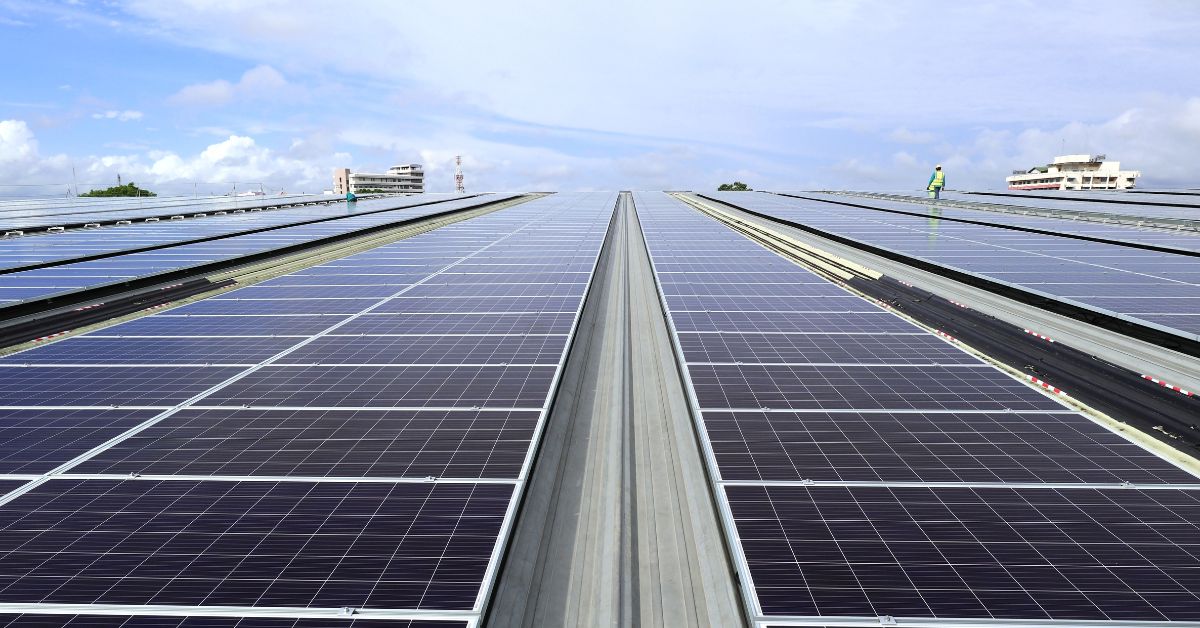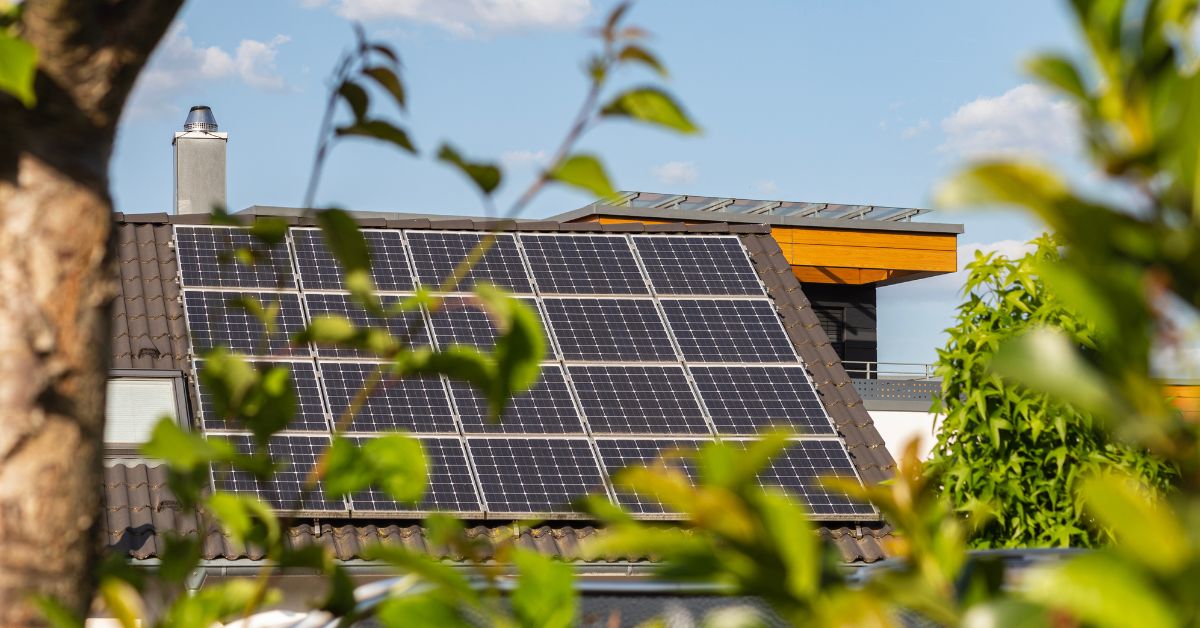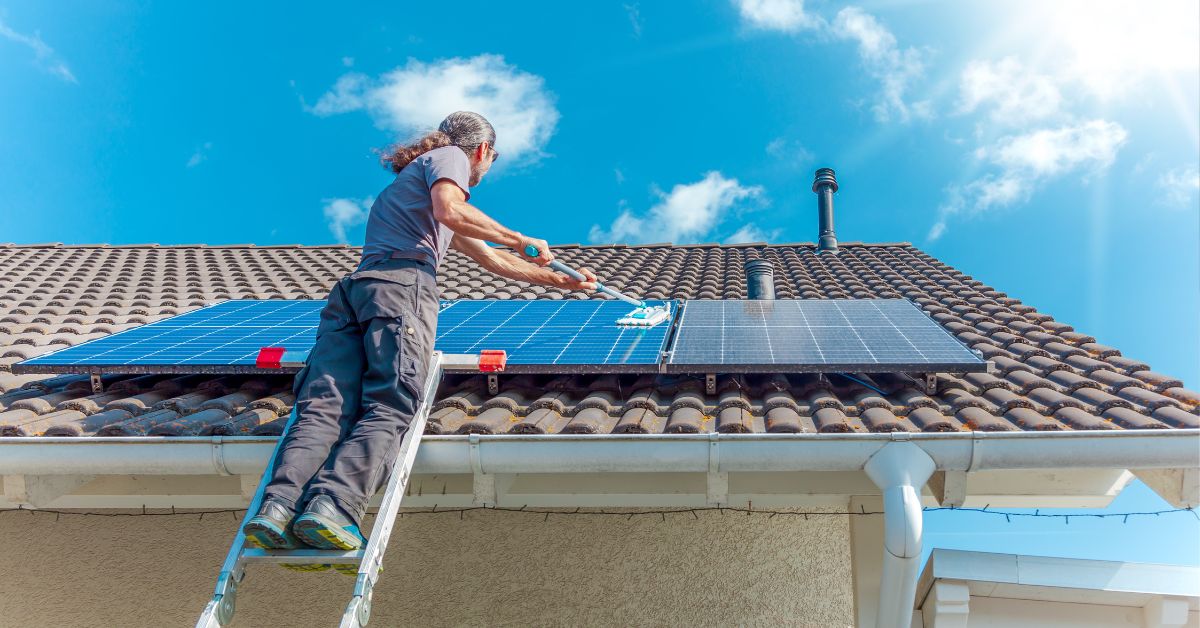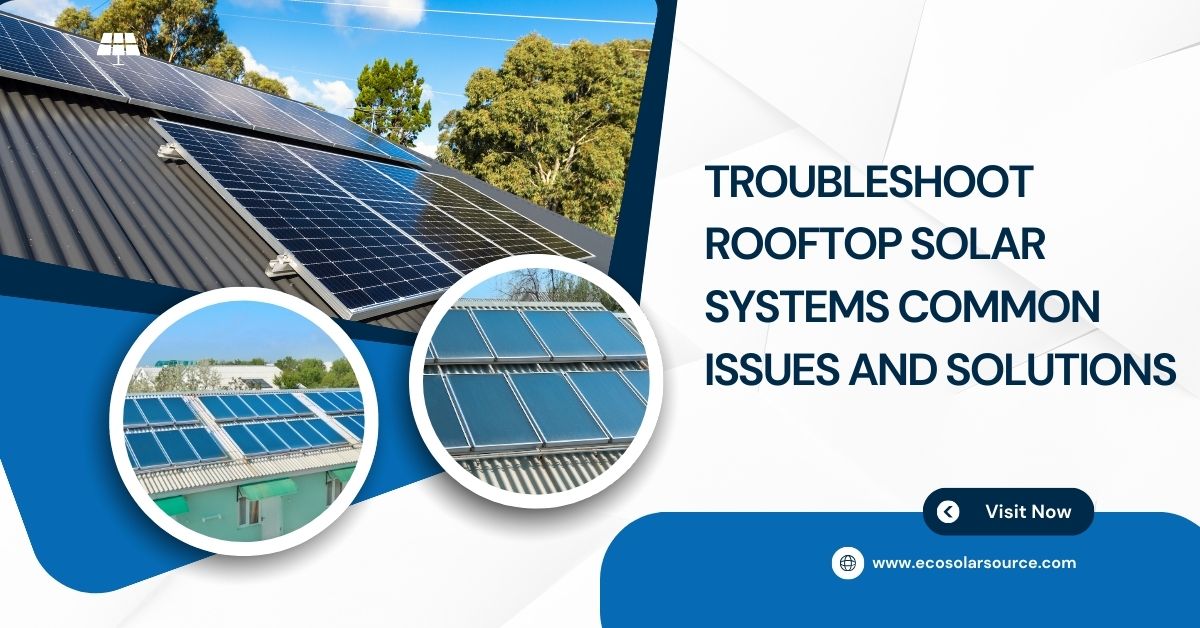Troubleshoot Rooftop Solar Systems Common Issues and Solutions
Know the details about Troubleshoot Rooftop Solar Systems Common Issues and Solutions, Troubleshooting rooftop solar systems involves identifying and addressing common issues that can affect performance and efficiency. Key problems include shading, inverter malfunctions, wiring issues, and poor connections. Shading from nearby trees or buildings can reduce energy output, while inverter faults may cause the system to stop converting DC to usable AC power.
Loose or damaged wiring can lead to power losses, and poor connections may result in inconsistent performance. Solutions involve regular system inspections, cleaning panels to remove debris, upgrading inverters, and repairing faulty wiring. Timely maintenance ensures optimal performance and longevity for rooftop solar installations.
Table of Contents
Troubleshoot Rooftop Solar Systems Common Issues and Solutions
Solar energy has emerged as a leading solution in the renewable energy revolution. Rooftop solar power systems efficiently harness the sun’s energy, reducing dependence on traditional electricity grids and significantly cutting energy costs. However, rooftop solar systems come with challenges and occasional malfunctions like any other technological setup. Troubleshooting these systems can sometimes feel overwhelming, especially for homeowners or business operators unfamiliar with their technical aspects. This comprehensive guide delves into common issues with rooftop solar systems, their underlying causes, and practical solutions.
Introduction to Rooftop Solar Systems
Rooftop solar power systems primarily consist of solar panels, inverters, wiring, and battery storage (in some cases). These systems are installed on rooftops, absorbing sunlight and converting it into usable electricity. Solar photovoltaic (PV) cells in the panels generate direct current (DC) electricity, which is then converted to alternating current (AC) through an inverter for home or business use.

The success and efficiency of solar systems depend heavily on the quality of installation, the components used, and regular maintenance. However, even the most well-installed systems can encounter performance issues due to external or internal factors. Identifying and resolving these problems promptly is crucial for maintaining a continuous and efficient power supply.
Common Rooftop Solar System Issues
a. Low Power Output
Symptoms:
- A noticeable drop in energy production.
- The system produces less power than the manufacturer’s estimated capacity.
Causes:
- Panel Degradation: Solar panels degrade over time, typically at a rate of 0.5% to 1% per year. This naturally results in a gradual reduction in output.
- Shading: Nearby trees, buildings, or other structures may cast shadows on the panels, reducing sunlight absorption.
- Dust and Dirt Accumulation: Dust, leaves, bird droppings, or debris on panels can block sunlight and decrease energy production.
- Poor System Design: An inefficient or poorly designed system (e.g., panels installed at incorrect angles or insufficient capacity) can fail to meet energy expectations.
Solutions:
- Panel Cleaning: Ensure that your panels are free of dirt, debris, or any obstructions. A routine cleaning schedule can significantly boost performance.
- Shade Removal: Trim overhanging trees or move objects that might block sunlight from reaching the panels.
- Monitoring System Design: Consult with a professional to assess whether the system was installed properly or if adjustments are necessary.
b. Faulty Inverter
Symptoms:
- The inverter displays error codes or fails to turn on.
- Inconsistent energy conversion from DC to AC.
Causes:
- Overheating: Inverters are sensitive to heat and may shut down if they become too hot. Improper placement, such as installing them in direct sunlight without adequate ventilation, can cause overheating.
- Wiring Problems: Loose or damaged wiring can disrupt the inverter’s ability to function correctly.
- Internal Component Failure: As with any electronic device, components inside the inverter may wear out over time, leading to operational failures.
Solutions:
- Relocate or Ventilate the Inverter: Ensure that the inverter is installed in a cool, shaded area with proper ventilation to prevent overheating.
- Check and Repair Wiring: Inspect the wiring for signs of damage or loose connections and repair or replace as needed.
- Consult the Manufacturer: If the inverter is still under warranty, contact the manufacturer for repairs or replacement.
c. Grid Connection Problems
Symptoms:
- The system intermittently shuts down or fails to send electricity to the grid.
- Power fluctuations or outages during grid-tied operation.
Causes:
- Grid Outages or Faults: In grid-tied solar systems, outages or issues with the main power grid can affect the system’s ability to export electricity.
- Faulty Net Metering: Problems with the utility company’s net metering system may prevent accurate tracking of power sent back to the grid.
Solutions:
- Wait for Grid Restoration: If the problem is related to a grid outage, the system should return to normal operation once the utility restores the grid.
- Check Net Metering Equipment: Contact your utility company to ensure that the net metering equipment is functioning correctly.
d. Panel Shading and Dirty Panels
Symptoms:
- Reduced energy production compared to the system’s capacity.
- Visual signs of dirt or debris on the panels.
Causes:
- Shade from Trees or Buildings: As solar panels require full exposure to the sun, even partial shading can drastically reduce their efficiency.
- Dirt and Dust Accumulation: The accumulation of dirt, dust, pollen, bird droppings, or snow can reduce sunlight absorption, cutting down energy generation.
Solutions:
- Regular Cleaning: Keep the panels clean by washing them with water and mild detergent, or hire a professional cleaning service.
- Trim Nearby Vegetation: If trees or plants are causing shading, trim them back to prevent future blockages.
e. Wiring Issues
Symptoms:
- The system fails to produce power.
- Inconsistent energy output.
Causes:
- Loose or Damaged Wiring: Over time, wiring connections can loosen or corrode due to weather exposure, causing intermittent failures or complete outages.
- Rodent Damage: Squirrels, birds, and other animals may chew on exposed wiring, causing disconnections or short circuits.
Solutions:
- Regular Inspections: Inspect the wiring for signs of damage, wear, or animal interference. Reconnect or replace any faulty cables.
- Cable Protection: Use protective conduit tubing around exposed wiring to prevent animal damage.
f. Battery Storage Malfunctions
For those who have battery backup systems, these batteries can sometimes face issues that affect overall system performance.
Symptoms:
- The battery fails to charge or discharge.
- Reduced storage capacity or faster-than-expected depletion.
Causes:
- Battery Age: All batteries degrade over time, reducing their ability to hold and discharge energy efficiently.
- Incorrect Settings: Misconfigured charge controllers or battery management systems can lead to improper charging or discharging cycles.
- Overcharging or Deep Discharging: Batteries that are overcharged or deeply discharged frequently can become damaged, shortening their lifespan.
Solutions:
- Battery Maintenance: Regularly check battery health and performance. Replace batteries when they show signs of significant degradation.
- Proper Configuration: Ensure that the battery management system is correctly set up to avoid overcharging or deep discharging.
Advanced Troubleshooting Techniques
If basic troubleshooting doesn’t solve the problem, there are several advanced methods that can help pinpoint the issue.

a. Use a Monitoring System
Most modern solar systems come with monitoring devices that track energy production, consumption, and overall system health. These systems can provide real-time data and alert you to specific problems, such as a sudden drop in output or inverter malfunctions. Access the system’s monitoring platform through its app or website to view performance statistics and error logs.
b. Thermal Imaging
For those experiencing efficiency issues but unable to identify the cause, thermal imaging can help detect hot spots on panels. These hot spots could indicate defective solar cells or electrical connection problems. While this method may require hiring a professional, it is an effective way to detect underlying faults.
c. Electrical Testing
Using a multimeter or other electrical testing devices can help identify faulty wiring, poor connections, or voltage inconsistencies. Checking the DC voltage from the panels, the AC voltage from the inverter, and the system’s overall current can help diagnose specific areas where power is lost.
Preventive Measures for Solar System Longevity
Prevention is better than cure, and maintaining your solar system can prevent most problems from arising. Here are some practical tips:
- Routine Cleaning: Regularly clean the solar panels to remove dirt, dust, and debris. Doing this once or twice a year (or more frequently in dusty areas) will help maintain efficiency.
- Scheduled Inspections: Schedule annual inspections by a qualified technician to check for issues such as loose wiring, inverter errors, and overall system health.
- Monitor Shading: Keep an eye on growing trees or new constructions that might cast shadows over your panels and affect performance.
- Battery Care: If your system has battery storage, follow manufacturer recommendations for charge cycles and storage conditions to prolong battery life.
When to Call a Professional?
While some solar system issues are simple enough for homeowners to fix on their own, others require the expertise of a trained solar technician. Call a professional if:

- You notice complex electrical issues, such as voltage irregularities, that require specialized tools.
- The inverter has persistent error codes or fails to restart after a basic reset.
- There is a significant drop in system performance, despite regular cleaning and maintenance.
- The system experiences recurring outages or grid connection failures.
- You suspect a major issue with your solar panels, such as cracked glass or water damage.
A professional technician can perform a more in-depth analysis, using tools like thermal imaging, electrical meters, and monitoring systems to determine the exact problem. Additionally, they can offer insights on how to improve the system’s efficiency and longevity.
FAQs About Troubleshoot Rooftop Solar Systems Common Issues and Solutions
Q1. Why is my solar system underperforming?
Common Issue: Shading, dirt, or debris on the panels reduces the amount of sunlight absorbed.
Solution: Clean the panels regularly and check for shading from nearby trees or structures. Ensure proper installation without obstructions.
Q2. Why are my solar panels not producing any power?
Common Issue: Issues with the inverter, circuit breaker, or system disconnection from the grid.
Solution: Check the inverter display for error codes, and ensure the circuit breakers are on. If the issue persists, consult a professional to inspect connections.
Q3. What should I do if my inverter is showing an error code?
Common Issue: Inverter failure, grid disconnection, or low sunlight conditions.
Solution: Refer to the inverter manual for the specific error code. If it’s a minor issue like low sunlight, wait for better weather. For persistent issues, contact a technician.
Q4. Why has my solar system stopped working after a storm?
Common Issue: Water intrusion, wind damage, or loose wiring after the storm.
Solution: Inspect for visible damage, and ensure all wiring is intact and dry. If there’s physical damage, switch off the system and have a professional evaluate it.
Q5. How do I know if a panel is malfunctioning?
Common Issue: Individual panel failure due to manufacturing defects or physical damage.
Solution: Use monitoring software to check individual panel performance. If one is underperforming, schedule a panel-specific test and replacement if necessary.
Q6. Why is my electricity bill still high with solar?
Common Issue: Incorrect system size, high energy consumption, or net metering issues.
Solution: Reevaluate your energy usage and check if your solar system is appropriately sized. Review net metering agreements with your utility provider.
Q7. What do I do if my solar panels are damaged?
Common Issue: Physical damage from hail, debris, or accidents.
Solution: Inspect for cracks, broken glass, or any visible signs of damage. Turn off the system and contact your installer or an insurance provider for repairs.
Q8. Why is the inverter displaying low voltage?
Common Issue: Faulty wiring, poor connections, or insufficient sunlight.
Solution: Check the wiring for loose connections or damaged cables. Ensure the system is in an area with adequate sunlight exposure.
Q9. How often do I need to clean my solar panels?
Common Issue: Accumulation of dust, bird droppings, or pollution reduces efficiency.
Solution: Clean the panels once or twice a year, depending on the location’s pollution level and environmental factors.
Q10. What should I do if my system is frequently disconnecting from the grid?
Common Issue: Grid instability, overvoltage, or inverter issues.
Solution: Check for grid-side voltage spikes or drops. Consult with your utility company or inverter manufacturer to adjust voltage settings or install surge protectors.
Rooftop solar systems are an excellent investment in renewable energy, but like any system, they require ongoing maintenance and occasional troubleshooting to ensure optimal performance. By understanding common issues and their solutions, homeowners can address many problems on their own and maintain consistent power generation. However, certain technical aspects, such as inverter failures or wiring issues, may require professional intervention. Regular monitoring, cleaning, and preventive maintenance are key to extending the lifespan and efficiency of your solar energy system.
Investing in these measures not only saves money in the long run but also ensures a reliable, green energy supply for years to come.
Click here to learn more about Troubleshoot Rooftop Solar Systems Common Issues and Solutions
Click here to learn more about Get to Know About the PM Suryodaya Yojana and Its Benefits

